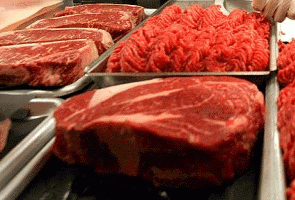
By Allan Barber
 Demographic changes will present challenges for the red meat sector in spite of apparently unstoppable world population growth.
Demographic changes will present challenges for the red meat sector in spite of apparently unstoppable world population growth.
Several speakers at the Red Meat Sector Conference made reference to the possible effects of these changes over the next 40 years, some of which will be positive, like the growth of the Indian and Chinese middle class, and others negative.
The most obvious challenge will be the ageing of the population in first world countries, because older people eat less and require more single portion meat cuts.
A significant statistic was the forecast decline in Japan’s population from 128 million today, of whom 20% are over 65 years of age, to 100 million by 2050, with 36% over 65.
As this trend is replicated in the USA and Europe, our traditional markets for red meat will of necessity be progressively replaced by new markets, some of which we are already servicing and others still to emerge.
The United Nation’s report, World Population Ageing 1950-2050, says this trend is irreversible and by 2050 more than half the world’s population will be aged over 60 which has enormous implications for economies as a whole and all aspects of consumption.
Colin James made the point the world is urbanising with the largest 600 cities already producing 50% of global GDP, but within 10 years 150 of these cities will have been replaced substantially by growing cities in Asia, notably China and India.
While this will be positive for meat consumption, with GIRA projecting an increase of 40 million tonnes by 2020, a third of which will be in China, beef and sheepmeat will be constrained by supply. The challenge for red meat will not be to find markets for what is produced, but to ensure the maximum value added by producing appropriate portions cut, packaged and presented to suit the highest paying customer groups.
GIRA’s Richard Brown was confident consumers would bear price rises in spite of the fact retailers were very resistant to price increases, while Mike Burrell, CEO of NZ Aquaculture, blamed internal competition in the seafood industry for keeping prices down for many years. This is no different from the red meat industry which has long been accused with some justification of the same mutual throat cutting behaviour.
This is the challenge for producers and exporters: to work together as an industry to provide the products consumers want and are prepared to pay for without using price as the sole basis of competition.
The Meat Industry Association’s (MIA) Annual Report highlights changes in New Zealand’s product market mix which suggests exporters are starting to get the message.
For instance, last year for the first time ever, beef exports to North America fell below 50% of total exports with the shortfall being picked up by North Asia, which saw increases in export values to Korea because of an outbreak of FMD, Japan and Taiwan, and higher shipments of high quality beef to Europe. Beef exports account for just over $2 billion, compared with sheepmeat which earned $2.9 billion.
Sheepmeat exports are diversifying too, although the EU still dominates, especially at the high value end. Over the 10 year period since 2001, the value of sheepmeat shipments has increased by nearly $1 billion annually; of this sum EU takes 55% by value and 44% by volume with nearly 40% by value in chilled form, representing more than two thirds of total chilled exports.
In contrast exports to China, which increased by 42% in volume terms and $60 million by value, consist almost entirely of frozen product. Other major sheepmeat markets include North America, the second largest by value, Middle East, South East Asia and the Pacific.
A big challenge for New Zealand in future will be to satisfy its higher value markets’ changing consumer tastes, as the populations age, while developing a larger base of rich, sophisticated customers in the higher growth markets, such as China and India.
Policy challenges will also include negotiating access to or Free Trade Agreements with new markets. In the next 30 years a major potential market with a younger, growing population must surely be Africa which is scarcely yet on our radar.
-----------------------
This piece was first published in Farmers Weekly, and is used with permission of the author.
Allan Barber is a commentator on agribusiness, especially the meat industry, and lives in the Matakana Wine Country where he run a boutique B&B with his wife. You can contact him by email at allan@barberstrategic.co.nz or through his blog at http://allan.barber.wordpress.com.

We welcome your comments below. If you are not already registered, please register to comment
Remember we welcome robust, respectful and insightful debate. We don't welcome abusive or defamatory comments and will de-register those repeatedly making such comments. Our current comment policy is here.